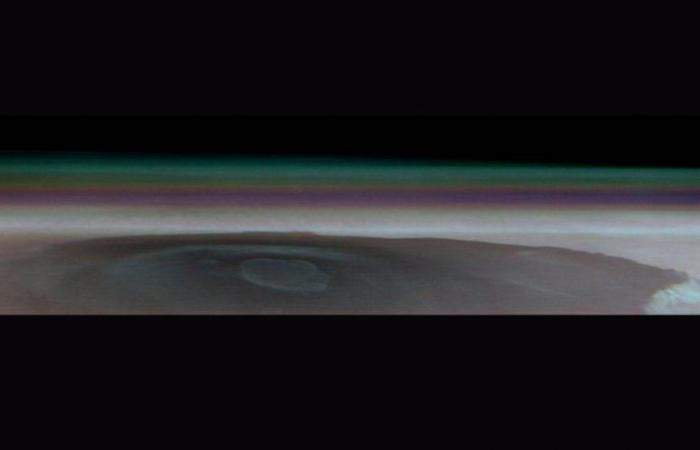10:09 AM
NASA’s oldest Martian robot, Mars Odyssey, took an unprecedented image of Mount Olympus, the largest volcano in the solar system, which covers a good part of the horizon in orbit.
The image is part of an ongoing effort by the Mars Odyssey team to provide high-altitude views of the planet’s horizon, so similar to the perspective from which astronauts on Earth climb aboard the International Space Station, the view allows scientists to learn more about clouds and dust in suspension on Mars.
Taken on March 11, The image captures Mount Olympus in all its splendorWith a base extending 600 kilometers, the shield volcano rises to a height of 27 kilometers.
You may be interested in: NASA’s ambitious plan to establish humans on the Moon and reach Mars in 2039
“We normally see Olympus Mons in narrow strips from above, but as we turn the spacecraft toward the horizon we can see in a single image how big it looms over the landscape,” Odyssey project scientist Jeffrey Plaut of NASA’s Jet Propulsion Laboratory in Southern California, which manages the mission, said in a statement. “Not only is the image spectacular, it also provides us with unique scientific data.”
In addition to offering a frozen image of clouds and dust, These images, when taken over several seasons, can give scientists a more detailed understanding of the Martian atmosphere..
For example, a bluish-white band at the bottom of the atmosphere gives a clue to how much dust is present at this location in early fall, a period when dust storms typically begin to form. The purplish layer above it was probably due to a mixture of the planet’s red dust with some clouds of bluish water ice. Finally, towards the top of the image, you can see a bluish-green layer where clouds of water ice rise about 50 kilometers into the sky.
To find out more: A NASA photo allowed us to observe large grooves carved by water on Mars
The orbiter, named after Arthur C. Clarke’s classic science fiction novel “2001: A Space Odyssey,” captured the scene with a heat-sensitive camera called the Thermal Emission Imaging System, or THEMIS, which was built and operated by Arizona State University in Tempe, but because the camera is designed to look down at the surface, taking a picture of the horizon requires extra planning.
By activating thrusters located around the spacecraft, Odyssey can point THEMIS at different parts of the surface or even rotate slowly to view the tiny moons of Mars, Phobos and Deimos.
The recent horizon image was conceived as an experiment many years ago during the landings of NASA’s Phoenix mission in 2008 and the Curiosity rover in 2012. As with other Mars landings before and after those missions touched down, Odyssey played an important role in transmitting data as the spacecraft sped toward the surface..
To transmit its vital engineering data to Earth, Odyssey’s antenna had to be pointed toward the newly arrived spacecraft and its landing ellipses. Scientists were intrigued when they noted that positioning Odyssey’s antenna for the task meant THEMIS would be pointed at the planet’s horizon.
Read also: Discover Mars in a mosaic delivered by NASA with 5.7 trillion pixels
“We decided to just turn on the camera and see what it looked like,” said Odyssey mission operations spacecraft engineer Steve Sanders of Lockheed Martin Space in Denver. Lockheed Martin built Odyssey and helps run day-to-day operations alongside mission leaders at JPL. “Based on those experiments, we designed a sequence that keeps THEMIS’ field of view centered on the horizon as we orbit the planet.”






